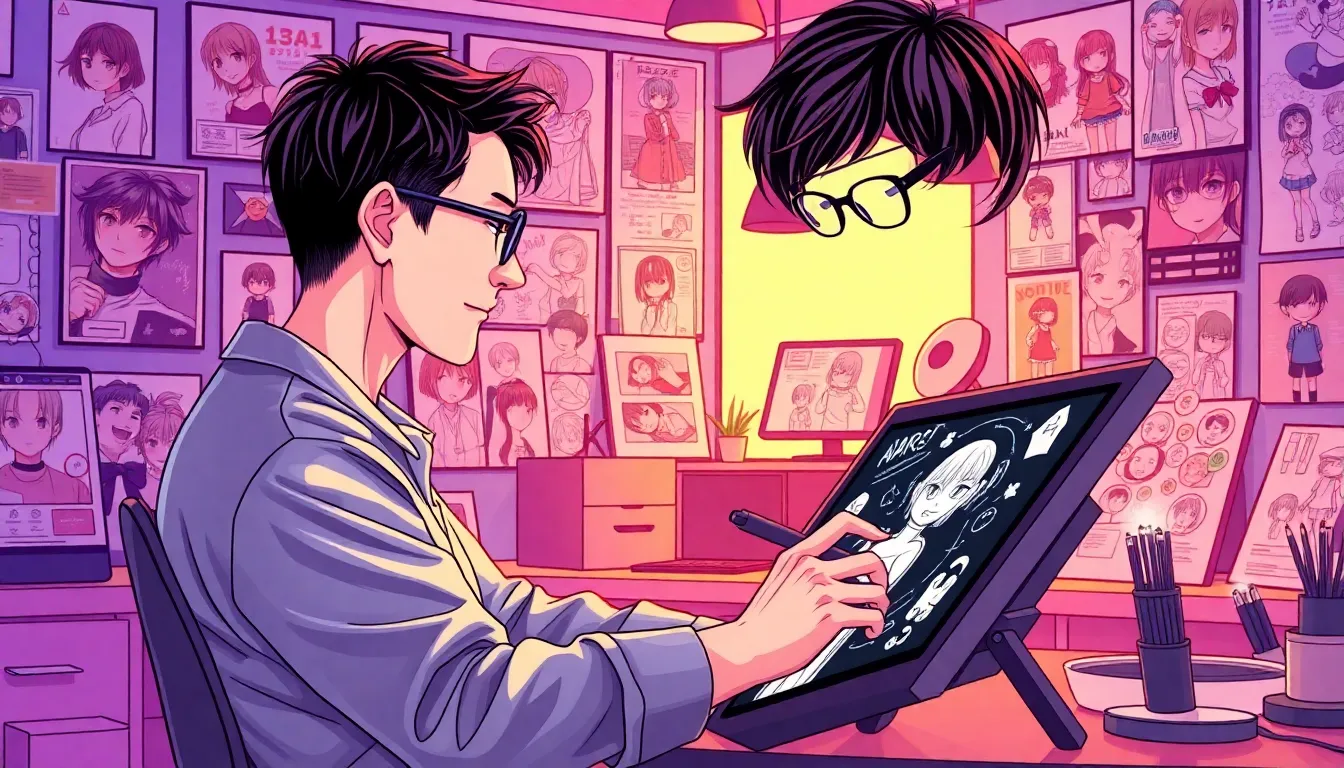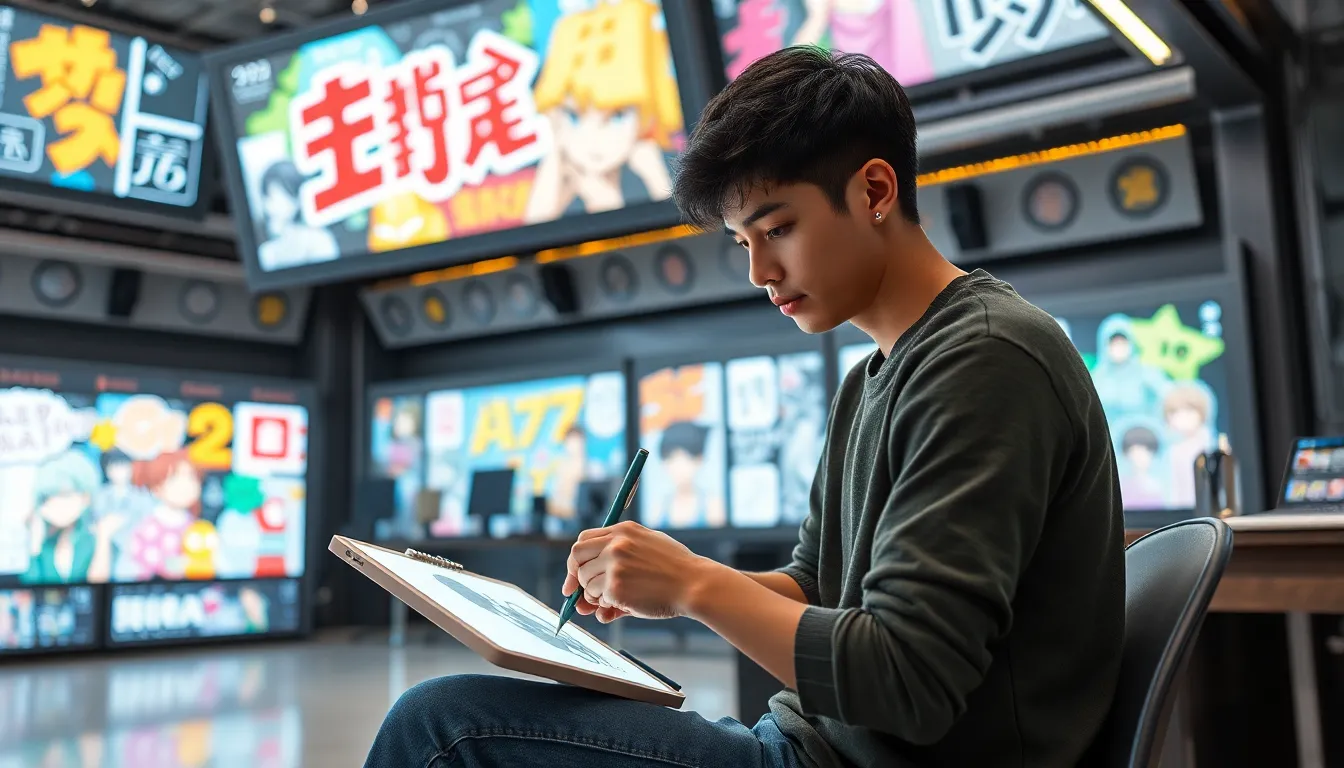In a world where creativity meets cutting-edge technology, AI manga is turning heads and raising eyebrows. Imagine a universe where robots wield pens and create captivating stories filled with vibrant characters and epic adventures. Sounds like a sci-fi dream, right? Well, it’s happening now!
Table of Contents
ToggleOverview of AI Manga
AI manga represents a transformative phase in the manga industry. It utilizes artificial intelligence to aid in story creation and artistic design. This technology provides tools for artists and writers, streamlining the creative process. From scriptwriting to character design, AI tools enhance efficiency and innovation.
AI-generated content varies significantly in quality, reflecting input and algorithms used. Advanced AI systems analyze existing works, learning from styles and narratives, resulting in unique outputs. With machine learning, these systems can generate original plots and character arcs, displaying impressive creativity.
The collaboration between human creators and AI leads to fascinating results. Writers can produce manga at an unprecedented pace while maintaining creative control. Artists can experiment with styles, allowing for multifaceted visual representations. This fusion encourages exploration of new genres and themes.
Popularity of AI manga continues to grow, attracting both creators and readers. Platforms specializing in AI-driven content showcase a variety of manga, often breaking traditional storytelling norms. As technology progresses, expectations for artificial intelligence in creative arts rise, pushing the boundaries of what AI can achieve.
Challenges accompany AI manga development, including ethical concerns around originality. Discussions about authorship and rights of AI-generated works are becoming more prevalent. The industry faces the responsibility of navigating these issues while harnessing the potential of AI.
Overall, AI manga embodies the collision of art and technology, emphasizing the evolving landscape of creative expression. Fresh stories and innovative designs emerge as AI tools become integral to the craft of manga creation.
The Evolution of AI in Manga Creation

AI’s integration into manga creation has transformed how stories are told and illustrated. This evolution reflects significant technological advancements and the creative imagination of artists and writers.
Historical Context
Early attempts at using AI in manga production focused on simple automation. Initial programs assisted with tasks like layout and background generation. These tools primarily replicated existing styles and forms seen in traditional manga. As technology advanced, machine learning algorithms gained traction, enabling deeper analysis of storytelling techniques and artistic expression. By the 2010s, efforts intensified to develop more sophisticated AI capable of generating unique narratives and visuals. Creative collaborations between humans and machines began to emerge, highlighting the potential of AI to enhance the manga-making process.
Recent Developments
Recent breakthroughs in AI technology have significantly influenced manga production. Enhanced algorithms can now create intricate plots and character designs inspired by existing works while offering fresh perspectives. Projects like AI Dungeon and other generative platforms demonstrate the ability of AI to craft elaborate stories in real-time. Moreover, AI art generation tools enable artists to experiment with varying styles and techniques, expanding their creative horizons. This advancement allows creators to produce manga rapidly, increasing their overall output. As AI’s role continues to evolve, the manga industry embraces innovative approaches that captivate diverse audiences, fostering widespread interest in AI-generated content.
Key Features of AI Manga
AI manga combines technology and creativity, showcasing unique strengths in both artistic styles and story generation.
Artistic Styles
Diverse artistic styles emerge from AI manga, allowing creators to experiment with varying aesthetics. Machine learning algorithms analyze extensive visual data, generating artwork that mimics established genres. Techniques such as neural networks enable the creation of intricate character designs and backgrounds. Artists use these AI-driven tools to refine their visions, producing artworks that resonate with audiences. Styles range from traditional Japanese influences to modern digital trends, attracting both new and experienced readers.
Story Generation
Story generation in AI manga incorporates advanced algorithms to craft engaging narratives. AI systems evaluate existing manga stories, identifying trends and themes to inspire new plots. Unique storylines often evolve from initial prompts, offering unexpected twists that maintain reader interest. Human creators collaborate with AI tools to enhance their storytelling capabilities, ensuring character development remains impactful. Additionally, these systems generate dialogue that captures the essence of each character, enriching the overall narrative structure and depth.
Popular AI Manga Tools and Platforms
Several AI manga tools and platforms serve creators seeking to harness artificial intelligence for their projects. These resources simplify manga creation, making it accessible for both novice and experienced artists.
Manga Generator offers a user-friendly interface for generating manga panels and characters using AI. This platform enables users to customize elements, streamlining the artistic process.
DeepArt utilizes neural networks to transform existing drawings into stunning manga styles. Artists upload their artwork, and the software applies various manga styles, enhancing creativity and experimentation.
MangaMaker assists writers with AI-driven script generation. Users input prompts, and the system generates plot ideas, character backgrounds, and dialogue, fostering quicker story development.
OpenAI’s DALL-E is another innovative tool that generates images based on textual descriptions. By providing input descriptions, creators obtain unique characters and scenes, aiding in visual storytelling.
AiManga stands out by offering both art generation and story crafting. This platform combines writing and art tools, allowing users to design characters and create narratives in a single space.
NovelAI enhances character design and narrative development through AI assistance. Users engage with AI-generated text, allowing for immersive storytelling experiences that resonate with readers.
Artbreeder focuses on collaborative art creation through genetics-based systems. Users mix and evolve images, producing original characters that align with their manga vision while iteratively refining their designs.
Comica targets aspiring manga artists by providing tutorials and AI-powered tools designed to improve artistic skills. This platform fosters creativity while guiding users through essential techniques.
Overall, these tools and platforms demonstrate the potential of AI in reshaping the manga landscape, enabling creators to explore new avenues of expression and innovation.
Benefits and Challenges of AI Manga
AI manga presents notable advantages and significant challenges, shaping the future of creative expression within the industry.
Advantages for Artists and Writers
Artists benefit from AI manga through enhanced efficiency. AI tools streamline the creative process, allowing creators to produce content faster. Writers enjoy the support of AI-generated plot ideas and character designs, fostering experimentation with narrative styles. These innovations encourage collaborative creations, allowing for a blend of human intuition and machine precision. By utilizing AI, artists can focus on refining their unique styles instead of getting bogged down in repetitive tasks. Increased output leads to broader exploration of genres and themes.
Ethical Considerations
Ethical concerns arise with AI-generated content, prompting discussions about originality and authorship. Questions about ownership of creative works generated by AI systems challenge traditional notions of intellectual property. While AI can produce unique narratives, the reliance on existing works for inspiration raises issues of plagiarism. Discussions around the implications of AI in creative fields also highlight the need for guidelines to protect artists’ rights. Navigating these complexities remains crucial as the industry embraces AI technology while balancing creativity and ethics.
Future of AI Manga
AI manga continues to evolve, shaping the future of storytelling and artistic expression. Enhanced algorithms lead to the generation of intricate plots and versatile character designs. Machine learning enables creators to push the boundaries of traditional manga, allowing for fresh artistic styles and engaging narratives.
Technology plays a crucial role in this transformation, simplifying the creative process and enhancing productivity for authors and artists alike. Collaboration between human ingenuity and AI fosters an environment of innovation. As this partnership grows, it maximizes the potential for diverse genres and themes, attracting a larger audience.
Notable trends emerge within the AI manga landscape. Increased accessibility encourages creators to experiment with tools like DALL-E and AiManga. These platforms streamline the production process, making it easier for novices and seasoned professionals to harness AI capabilities. Rapid advancements indicate that AI-generated works might soon rival traditional methods in quality and creativity.
Ethical considerations remain a focal point as well. Originality and authorship in AI-generated content require careful examination. As the industry embraces these innovations, discussions about intellectual property rights gain significance. Balancing creative freedom with ethical responsibility will shape the future trajectory of AI manga.
AI manga has the potential to redefine the creative industry, sparking new conversations about art and technology. Future innovations will likely continue to enhance collaboration, efficiency, and quality in manga creation. Remaining aware of the challenges ahead will ensure that creators navigate this evolving landscape with integrity and purpose.
Conclusion
AI manga is reshaping the creative landscape by merging technology with artistic expression. As creators embrace AI tools, they unlock new possibilities for storytelling and character design. This collaboration not only enhances efficiency but also encourages exploration of diverse genres and themes.
While the potential for innovation is immense, the industry must address ethical concerns surrounding originality and authorship. Navigating these challenges will be crucial in ensuring that the integration of AI in manga remains respectful of artistic integrity.
As AI continues to evolve, its impact on manga will likely deepen, fostering a vibrant community of creators and readers eager to explore this exciting frontier.






